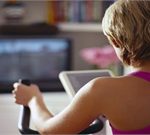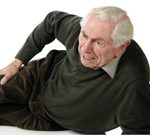
Gymgoers who’ve accidentally left their headphones at home might be all too familiar with this frustrating feeling: Exercising without music is a much harder go. And now a broad new review of nearly 140 studies — the first of its kind — suggests there’s real science to back that up, with clear evidence that music not only makes exercise seem easier and more enjoyable but actually results in a more productive, efficient workout. “No one would be surprised that music helps people feel more positive during exercise … [but] the fact that music provided a significant boost to performance would surprise some people,” said lead author Peter Terry, dean of graduate research and innovation at the University of Southern Queensland in Australia. “And the fact that music was shown to improve physiological efficiency would certainly raise eyebrows.” Terry and his team reviewed studies that were conducted as far back as 1911 and as recently as 2017. Collectively, they included almost 3,600 people. The focus was restricted to studies that explored music’s impact on either sport-related activities or exercise routines. So while walking as an exercise was included, gardening and housework were not. Nor were music-based experiences such as dance, gymnastics and ice skating. Music’s impact was assessed by the way it made a person feel during workouts; how it affected perceptions of exercise difficulty; and… read on >

























-300x200.jpg)










